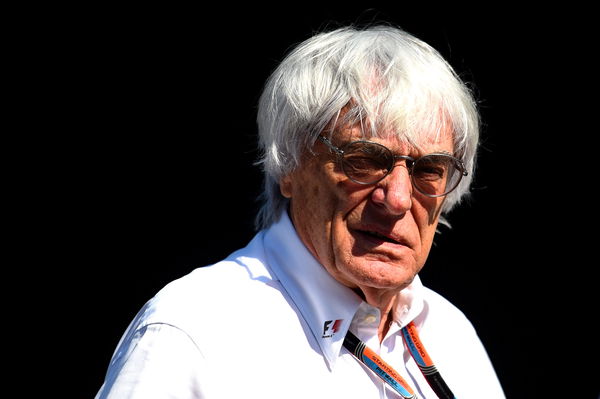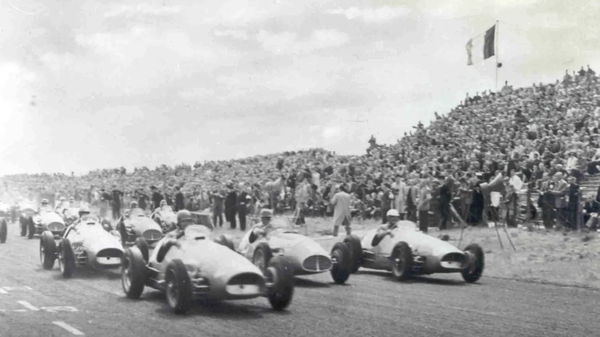
via Reuters
Formula One F1 – Dutch Grand Prix – Circuit Zandvoort, Zandvoort, Netherlands – September 4, 2022 Red Bull’s Sergio Perez in action during the race REUTERS/Yves Herman

via Reuters
Formula One F1 – Dutch Grand Prix – Circuit Zandvoort, Zandvoort, Netherlands – September 4, 2022 Red Bull’s Sergio Perez in action during the race REUTERS/Yves Herman
It took 36 years to bring the Dutch GP back on the F1 calendar. The Zandvoort circuit is one of the historic tracks of the sport. However, poor maintenance and financial crunches have been its constant companions. Niki Lauda was the last driver to win in Holland in 1985, after which former F1 honcho Bernie Ecclestone shut the track for Formula 1. And three decades later, someone of their own—we mean Max Verstappen—conquered his home Grand Prix.
Watch What’s Trending Now!
We often talk about drivers and their journey to F1 and how difficult it can be to find one’s ground in the sport. Meanwhile, Zandvoort, just like any F1 racer, has battled it out to return. But, unfortunately, the impending loom of discontinuation has once again clouded over the track. This time, unlike the previous one, Bernie Ecclestone is positive that there are chances of retention because of their homeboy Max.
Meanwhile, curiosity is tickling our minds. Why did Ecclestone discontinue the Zandvoort circuit in 1985? This question surely strikes your mind, just like ours. So, let’s find out.
ADVERTISEMENT
Article continues below this ad
Bernie Ecclestone demanded the Zandvoort circuit stand on its own two feet financially
Ecclestone had been running the F1 circus until 2017 when US Liberty Media came into the picture. The 93-year-old Briton was the kingpin of F1 even in 1985. With a career that lasted for four decades, you are sure to call him a genius of some sort.
ADVERTISEMENT
Article continues below this ad
Given the condition and history of Zandvoort back in the day, Bernie Ecclestone had to call off organizing races any further. Ecclestone wanted not 15000 or 20000, but 45000 people to come for the Dutch GP in 1985. Would that have been a success? Yes, but not financially. The former F1 chief had said: “We’ve been supporting this race for five or six years financially. And I think it’s about time it stood on its own feet.” Ecclestone had claimed that he had 23 world championship applications on his desk. This means 23 different circuits had applied to find a spot on the F1 calendar. Thus, the Brit said: “We can’t keep on pouring money into Holland.”

via Getty
SPA, BELGIUM – AUGUST 22: F1 supremo Bernie Ecclestone looks on in the paddock during qualifying for the Formula One Grand Prix of Belgium at Circuit de Spa-Francorchamps on August 22, 2015 in Spa, Belgium. (Photo by Lars Baron/Getty Images)
Bernie Ecclestone further stated, “I know I can find somebody that wants to support it. Maybe the government or the municipality thinks it’s a good amount of money it brings to the town.” But Ecclestone argued that F1 has a character and maybe they are not so “pennywise and pound-foolish.” However, could the sport have managed for less money in Holland than they got elsewhere? To simplify: Trying to get more people for a lower ticket price. Bernie said that there’s a limit on how many people could enter the track or the city. During race weekends, the hotels and restaurants would double their prices, complained the F1 boss.
The Briton had argued that the ticket prices also couldn’t be raised. “Do you think it’s normal for a bricklayer who lives in Amsterdam and who likes to go with his son to this race to come here and spend about half of his month’s salary?” debated Bernie. So, the Dutch GP has always faced financial and administrative problems. Almost forty years ago, they discontinued the circuit because of these issues, and 2025 could mark the end for the second time. Moreover, the history of the track attracts lots of people every year since its return to F1. Icons have graced Zandvoort. Let’s take a quick look at the history of the Zandvoort circuit.
ADVERTISEMENT
Article continues below this ad
History of the Zandvoort circuit: Glory, accidents and more
Zandvoort has been in motorsport since 1930. Starting from a temporary street circuit to a full-fledged Formula 1 circuit, the track has witnessed history in the making. However, the circuit wasn’t completely ready for Grand Prix races until 1948. Back then, the track had only five named corners: Hoek van Tarzan, Hunserug, Scheivlak, Bos In, and Bos Uit. Many of these corner names are still used today. In 1952, the World Championship was organized in the Netherlands for the first time. Legends like Juan Manuel Fangio, Alberto Ascari, Graham Hill, and more have won the ‘Grote Prijs van Nederland’.
But things haven’t been all great and glorious. Accidents, underdeveloped tracks, and more have troubled the circuit’s easy continuation in F1. Bernie Ecclestone has been associated with the circuit for a long time and has witnessed all the highs and lows. So, let’s see…
The tragic demise of Piers Courage in 1970
The 1970s were a tumultuous era for the Dutch GP. In 1970, Frank Williams driver Piers Courage met a tragic end. He crashed heavily near the notoriously fast Tunnel Oost corner after a wheel came off and hit him on the head and passed away on the spot. However, the race resumed. Back in the day, accidents and demise didn’t pause the race—surprising, wasn’t it? There was a mood of mourning on the track following Courage’s unfortunate passing.
No race for the 1972 F1 season
1971 was a normal season like any other. Jacky Ickx won with Ferrari, fighting a spirited battle against Pedro Rodriguez. However, there was no race in 1972. It was originally on that year’s calendar, but the drivers refused to race at Zandvoort because the facilities and conditions of the circuit were out-of-date with Grand Prix racing at that time. Learning from the setback, Zandvoort underwent massive reconstruction and returned to action in 1973.

The reopening of the circuit in 1973 saw another accident
The race that was supposed to be the most organized one of the season turned out to be one of the biggest disasters. A lack of communication led to the tragic accident and fire incident that took the life of Roger Williamson. The driver crashed on the eighth lap and within moments, his car was on fire. He met his painful end due to a lack of extinguishers. Again, safety rules and measures were modified and the circus ran once again in 1974. Niki Lauda won in 1974 and was the last one to win the last race in Zandvoort in 1985.
Since its return in 2021, Max Verstappen has been the reigning champion of the Dutch GP. The Flying Dutchman is Bernie Ecclestone’s favorite. The ex boss, strongly believes that only Verstappen can save the circuit from losing out on a spot in 2026. However, it is unsure yet. But now we understand why Ecclestone decided to discontinue the Zandvoort circuit in 1985. The track has always been troubled by financial crises and poor infrastructure. And if the condition doesn’t improve, nothing (not even Max Verstappen) can save the track from contract termination. What’s your take on this? Share below.
ADVERTISEMENT
ADVERTISEMENT
ADVERTISEMENT
ADVERTISEMENT


